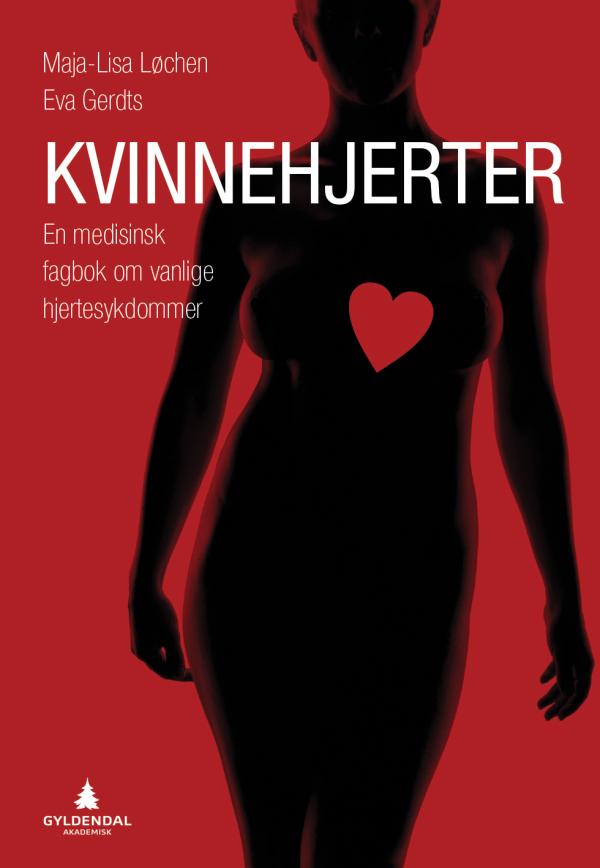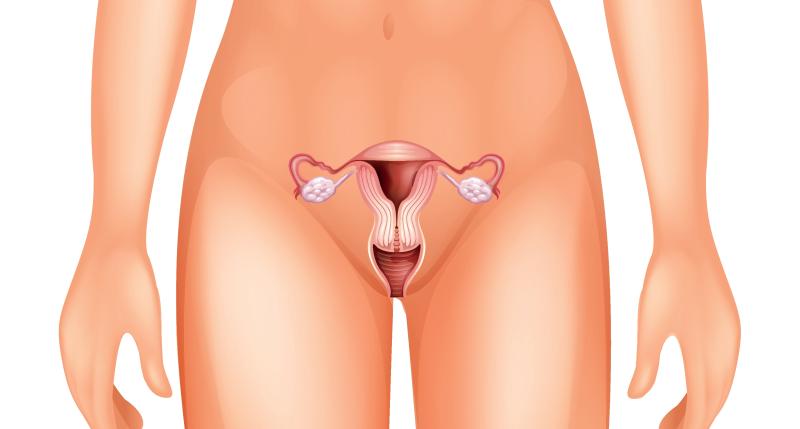“If you ask women, they often think that breast cancer is the disease that kills most women. When it comes to younger women this is correct, but not for women in total. Heart disease is the major killer of women in Norway,” says Maja-Lisa Løchen.
She is professor of preventive medicine at UiT the Arctic University of Norway and senior consultant at the Department of Cardiology, University Hospital of North Norway.
According to Statistics Norway’s last updated figures on causes of death from 2012, 645 women died of breast cancer. 1489 women died of heart attack.
Both in Norway and in Europe in general, more women than men die of heart diseases.
Løchen has been concerned with gender differences in heart diseases since she was a student in the late 1970s, and this has been her main area of research and expertise as a physician since she graduated in 1983.
“We possess a lot of knowledge on how women’s and men’s hearts and heart diseases differ from each other. But the diagnosis and treatment methods for women’s heart diseases are still not as well developed as those for men,” says Løchen.
“We still lack knowledge on how large groups of heart medications may have different effects on men and women. And in research projects on treatment methods the majority of the participants are still men.”
We still lack knowledge on how large groups of heart medications may have different effects on men and women
Small women’s hearts
On average, women’s hearts are smaller than men’s hearts.
The blood vessels surrounding the heart are smaller, and, because they are small, it is more difficult to trace changes in them.
“To put it simple, it is more difficult to examine women’s hearts than men’s hearts,” says Løchen.
On average, women are ten years older than men are when they have heart attacks. On men, the symptoms are often very clear. Women’s symptoms are more diffuse, and are often confused with exhaustion, age, or with the flu.
Different types of heart diseases may also have very similar symptoms for women.
Cardiac fibrillation, irregular beating of the ventricles, is more common for men than for women, but it often affects women harder when they have it. They also face a higher risk of major disabling cerebral strokes as a result.
So-called broken heart, stress cardiomyopathy, affects more women than men. Ninety per cent of these patients are women, most of them above the age of 50.
The male heart is still the norm
There are many similarities between men and women’s heart diseases, but there are also some obvious important differences.
Nevertheless, the two cardiologists Kolbjørn Forfang and Helge Istad wrote a book about the heart in 2011 called Cardiology – A Clinical Guide (Kardiologi – Klinisk veileder) almost without mentioning gender differences or women at all. In a revised version from 2015, pregnant women are thematised in a new chapter on heart disease and pregnancy.
“It’s a fantastic book! But it doesn’t problematise women or gender differences. In the 2011 version, there is hardly one index word on women,” says Løchen.
“How can it be a fantastic book if it doesn’t problematise gender at all, when gender is such an obvious and important factor?”
“It is a good book. It takes up everything. But the gender perspective is missing.”
As a result, Løchen sat down and wrote her own cardiology book in collaboration with colleague and professor of heart disease Eva Gerdts at the University of Bergen: Women’s hearts. A medical textbook on common heart diseases (Kvinnehjerter. En medisinsk fagbok om vanlige hjertesykdommer).
“The book is called 'Women’s hearts'. Are the differences so decisive that we should talk about women’s hearts and men’s hearts?”

“In our opinion, yes. Occurrence, risk factors, symptoms, and in many cases the course of disease are different for men and women. Gender differences in heart disease have only recently been integrated in the international guidelines. And there is still a lot of knowledge we don’t have yet. In our opinion, Norwegian researchers and those who provide funding for cardiological research should be aware of this and face the consequences.
Women’s infarction and men’s infarction
Women’s symptoms of heart attack are different from men’s symptoms. This has become a classical example of gender differences within medicine and diseases, since the discovery caused major headlines in the 1980s. Because nobody knew about this or was concerned with it, both treatment and diagnosing were adjusted to men.
But although these gender differences have been known for several decades now, both the women themselves and their general practitioners struggle to realise what it is when they have a heart attack.
“They may not have very strong breast pains; other parts of the body such as their shoulders and their neck might be affected instead. They have difficulties breathing and feel unwell, they might wonder if they have the flu or if they should start working out seriously. They wonder if there is something wrong with their digestion or if they’re having a nervous breakdown. It is neither clear to the general practitioner nor the woman herself that she’s in a hurry to get to the hospital,” says Løchen.
Thus there’s a bigger chance that women don’t get to the hospital in time to get treatment for their heart attack compared to men.
“Age also plays an important role. People think, “I’m short-winded, but I am getting older. I’ll see how it goes.” It is well known that men have heart attacks, and they are often younger and healthier when they have it. If you’re healthy and feel sudden breast pains, you realise that there’s something wrong.”
Our challenge in Norway today is that there are major social differences related to the risk of heart attack.
Class distinctions in the risk of heart attack
“But isn’t it a fairly well known fact that women also have heart attacks and that the symptoms are different than for men?”
“You possess this knowledge, but you’re probably well educated? Well-educated women know a lot, and what they don’t know they can find out for themselves. Our challenge in Norway today is that there are major social differences related to the risk of heart attack – in terms of the level of education and geographical differences – which also has to do with education level.
“There is a difference between Northern Norway and Akershus in the southern part of Norway. Or between the west and the east of Oslo.”
One of the biggest risk factors when it comes to heart attack, especially for women, is smoking.
The risk of heart attack for fifty-year-old men is approximately five times as high as for fifty-year-old women. But if the woman smokes, her risk of dying of heart attack is as high as for a non-smoking man.
“We easily think that hardly anyone smokes in Norway, since only thirteen per cent of the population smokes. But if you break it down to geography, there are twice as many smokers in Finnmark and eastern Oslo as in the west of Oslo,” says Løchen.

Campaigns not enough
From a dramatic peak in the death rate of heart attacks in the 1970s, the risk of dying of heart attack is now less than half of what it was. This is the result of a healthier life style (less fat, less smoking, more physical activity) and increasingly better treatments.
Yet according to Løchen, it is possible to get the figures even further down.
In the US, celebrities and cardiologists have come together and initiated campaigns such as Fight the lady killer, aiming to enlighten women about the dangers of heart diseases.
According to the campaign’s website, one American woman dies every minute as a result of heart disease, and in total, heart disease kills more women in the US than all types of cancer put together. The initiators maintain that, “Until the world realizes that a woman’s heart is different from a man’s heart, we will not manage to change anything”.
Løchen is not sure that a similar campaign is what is needed in Norway. Because it is not only about gender, it is just as much about class.
“Health has a lot to do with politics,” says Løchen.
“And these are issues that cannot only be addressed through campaigns. Campaigns often reach those who are already educated. They’re important, but they’re not enough. We need structural measures, and that is a task for the municipalities and the state.”
See also: The women's cancer nobody talks about
Broken women’s hearts
Among all the heart diseases addressed in Løchen’s book, the so-called broken heart syndrome is possibly the most gender stereotypical. Women can get heart attack from stress.
“The first time I heard about this was at an international congress in the 1990s, and I thought, “Good gracious! This must be hysteria,”” says Løchen.
But the Japanese researchers who first published a scientific article about the disease had in fact found a distinctive type of heart attack which most frequently occur among women.
Due to stress hormones, the heart assumes the shape of a jar, which causes a small heart attack.
“It is speculated whether this has to do with the fact that women have smaller bodies than men and that their chest, where the heart lie, has a different shape. That it has to do with anatomic differences. Women’s bodies are more compressed than men’s bodies. Consequently, their heart may be more exposed to extreme or sudden stress.”
Almost ninety per cent of the patients who get this type of heart attack are women, and it normally occurs after a serious shock such as for example losing one’s partner.
“It is also speculated whether men and women master stress differently, and that this may be a cause. But we don’t have the answer to that,” says Løchen.
In studies where there have been enough women to be able to see actual results, important differences have often been found.
The research must include women
Most of Løchen’s research is based on the Tromsø Study (Tromsøundersøkelsen), one of Norway’s most extensive population surveys over the past forty years. The survey measures risk factors and follows people until they develop diseases and through the course of diseases.
When the first Tromsø Study started in 1974, only men participated. But the selection was soon expanded to involve women as well.
“Those who initiated the study say that they started with only men due to financial reasons. And because they thought heart attack was primarily a men’s disease,” says Løchen.
Today, this type of population surveys normally want fifty per cent men and fifty per cent women.
“The treatment studies are challenging. Normally a smaller percentage of women participate in studies related to the treatment of heart attack, for example thirty per cent women and seventy per cent men,” says Løchen.

The argument for this is often the same as it was in the 1970s: economy. Women normally get the disease later in life, they need follow-up over a longer period of time, they become pregnant and menstruate, and have a lot of hormone fluctuations. Women complicate the study and cost money.
“But in studies where there have been enough women to be able to see actual results, important differences have often been found,” says Løchen.
“These studies show for instance that some women react differently to various medications, they experience other side-effects. There is a lot of focus on this, but there are still large groups of medications to which we don’t know enough about the gender differences.”
Better methods for diagnosis
We know a good deal about what increases the risk of heart disease, although there is a lot we still don’t understand, such as why women have heart attacks later in life, and why smoking cancels out that advantage.
A lot of work also remains when it comes to diagnosing women’s heart diseases. This is Løchen’s writer and research colleague Eva Gerdts’ area of expertise. She is one of the leading researchers globally on studies and diagnosing of heart disease with ultra sound.
Today’s gold standard for exposing heart attack, x-ray examination of the blood vessels in the heart muscle, misses as much as twenty per cent of the women who suffer from acute heart attack.
“And women must be included in a sufficient amount of studies in order to see the effects on women as well, not only the effect on women and men altogether,” Løchen concludes.
Translated by Cathinka Dahl Hambro
FACTS: Common heart diseases and gender differences:
Myocardial infarction (Cardiac ischemia)
On average, women have heart attacks ten years later than men. Early heart attack for women occurs before the age of 65, for men before the age of 55. The symptoms are often more diffuse for women than for men, other parts of the torso are affected, and the symptoms are often interpreted as all different kinds of things; asthma, nerves, digestion, weight gain, bad physical shape etc. It is not necessarily clear neither to the woman herself nor to her general practitioner that she is in urgent need to get to the hospital. Therefore, women often get late treatment.
Heart disease caused by high blood pressure (Hyper tensive heart disease)
Changes in the structure or function of the heart due to high blood pressure. For young people, high blood pressure is more common among men, for those above the age of 60, high blood pressure is more common among women. The condition is an important risk factor for other heart diseases, both heart attack, heart failure, and cerebral stroke. Blood pressure treatment may reverse the changes, but the effects of treatment are not as good for women as for men if there are changes in the mural endocardium (heart chamber walls). It is therefore particularly important that women with high blood pressure are offered the right treatment in time. More men than women have heart attacks, but more women than men have hyper tensive heart disease.
Cardiac fibrillation (Atrial fibrillation)
Irregular beating of the ventricles due to electrical disturbances in the atria. It is slightly more common among men than women, but it has bigger consequences for women, who have poorer tolerance than men. It is sometimes caused by too much physical activity. Both the symptoms and the disease are worse for women than for men. Women more often experience total incapacitation in relation to attacks. The disease may also cause cerebral stroke among elderly or in connection to other heart diseases, high blood pressure, or diabetes, and more women than men experience disabling cerebral stroke.
Calcification of the cardiac valve between the heart and the main artery (Aortic stenosis)
Primarily affects elderly people. Women have smaller hearts than men, and it is therefore more difficult to examine women. The patient needs to be operated or will otherwise die; the time perspective is short. It may be more difficult to find replacement valves suitable for small women’s hearts than for men’s hearts. Traditionally, elderly women were often not operated in fear of risking their small hearts and small, tangled blood vessels. A new catheter based method with which a new valve is inserted through the arteries instead of an open heart operation has, however, increased the chances for women.
Leaking mitral valve (mitral insufficiency)
With women, this is most often caused by a disease in the valve itself, which is slightly bigger than men’s mitral valve. With men, it is most often caused by another heart disease. Again, women’s small hearts make it challenging to examine the heart. It is vital that the physician knows what is normal for women’s hearts, not only for men’s hearts. According to studies from the US, women are diagnosed later than men, and have therefore less chances of successful operation results and higher death rate. Norwegian data do not exist in this field.
Heart failure
When the heart does not provide sufficient oxygen rich blood to the other organs in the body. The most important risk factor among men is early heart attack, among women it is high blood pressure. Among men, heart failure most often manifests itself in reduced pumping capacity, which may be treated with efficient medications. Among women, heart failure is often manifested in stiffness of the mural endocardium, but with normal pumping capacity. As of today, there is no effective treatment for this. Heart failure is caused by high blood pressure or cardiac fibrillation, often combined with diabetes and obesity. Preventive measures are important among women, primarily good blood pressure treatment.
Reference: Løchen, Maja-Lisa and Eva Gerdts, Women’s hearts. A medical textbook on common heart diseases (Kvinnehjerter. En fagbok om vanlige hjertesykdommer (2015), Gyldendal akademisk


